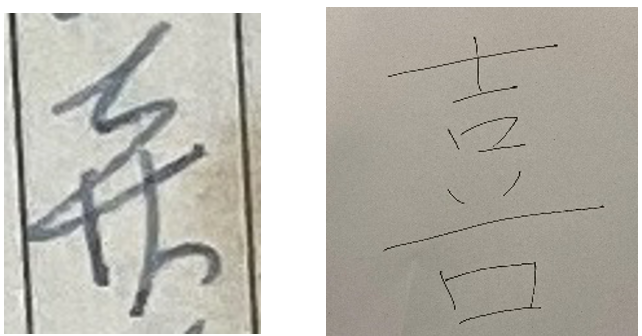A Preliminary Proposal for Digital Scholarly Editing that Uses Modern Japanese autograph manuscripts: How to markup autograph manuscripts of Rampo Edogawa
Authors: Shioi, Sachiko / Nagasaki, Kiyonori
Date: Thursday, 7 September 2023, 4:15pm to 5:45pm
Location: Main Campus, L 1 <campus:stage>
Abstract
Recently, digital scholarly editing has been discussed in the research on modern autograph manuscripts1, such as archives in which documentary texts are the main focus of editing2, and attempts to enable an intuitive understanding of the process of writing and creation3. On the other hand, in the research on modern Japanese autograph manuscripts, digital scholarly editing has yet to be conducted because, in Japan, digital images and paper publications with transcriptions and images are used as surrogates of autograph manuscripts. We have already discussed the application of the TEI guidelines to modern Japanese autograph manuscripts4 5. Therefore, we discuss digital scholarly editing that uses TEI, pointing out research questions on how to provide its surrogates in Japan.
Three questions currently exist in the research on modern Japanese autograph manuscripts in Japan: usability, representation of vatiants, and transcription. In modern Japanese autograph manuscripts, authors used kuzushi-ji (figure 1), which profoundly differs from contemporary Japanese handwriting and is difficult even for modern Japanese researchers to read.

Thus, it is inconvenient to use them for research if only digital images are provided. Furthermore, paper publications with transcriptions and images are difficult to present variants within a manuscript since only the “final form” becomes the text. When indicating the writing process, it becomes complicated and hard to understand. In addition, in some cases, it is impossible to represent the scribal scripts of kuzushi-ji in the paper edition, and accuracy is sacrificed for the sake of readability. Because of these questions, research on modern manuscripts is unfavorable in Japan.
To resolve these questions, we propose to markup autograph manuscripts of the works by Edogawa Rampo, one of Japan’s earliest writers of detective stories, based on a document-oriented markup method. In his works it is often observed that he writes on the blank pages of his diary, which is atypical considering that writers of modern Japanese literature typically use manuscript paper. However, given the complexity of his writing process and the abundance of examples utilizing cursive script, this case is deemed appropriate for study.
About the authors
Sachiko Shioi is a Ph.D. student at Faculty of Letters, Arts and Sciences, Graduate school of Waseda University. She researches autograph manuscripts of works by Edogawa Rampo, one of Japan’s earliest writers of detective fiction. Her project is a digital scholarly editing that uses modern Japanese autograph manuscripts.
Kiyonori Nagasaki, Ph.D., is a senior fellow at the International Institute for Digital Humanities in Tokyo. His main research interest is developing digital frameworks for collaboration in Buddhist studies. He is also investigating the significance of digital methodology in the Humanities and promoting DH activities in Japan.
Notes
-
Driscoll, M. J., Pierazzo, E. (Eds.). (2016). Digital scholarly editing: Theories and practices. Open Book Publishers, pp.49-50. ↩
-
Cohen, M., Folsom, E., Price, M. K., Editors. (n.d.). The Walt Whitman Archive https://whitmanarchive.org/ (last accessed: 29/04/2023). ↩
-
Pierazzo, E., André, J. (n.d.). “Autour d’une séquence et des notes du Cahier 46: enjeu du codage dans les brouillons de Proust”: http://peterstokes.org/elena/proust_prototype/ (last accessed: 25/04/2023). ↩
-
Shioi, S., Nagasaki, K. (2022). “A proposal of an XML markup method based on TEI using a ‘Nisen-dōka’ manuscript by Rampo Edogawa”. IPSJ SIG Technical Report, Vol. 2022-CH-130 No.4. ↩
-
Shioi, S., Nagasaki, K. (2022). “Possibility of Structural Description for handwritten materials of modern Japanese literature: Using Rampo Edogawa’s handwritten materials”. IPSJ Symposium Series Vol. 2022, No.1. ↩
Contribution Type
Keywords